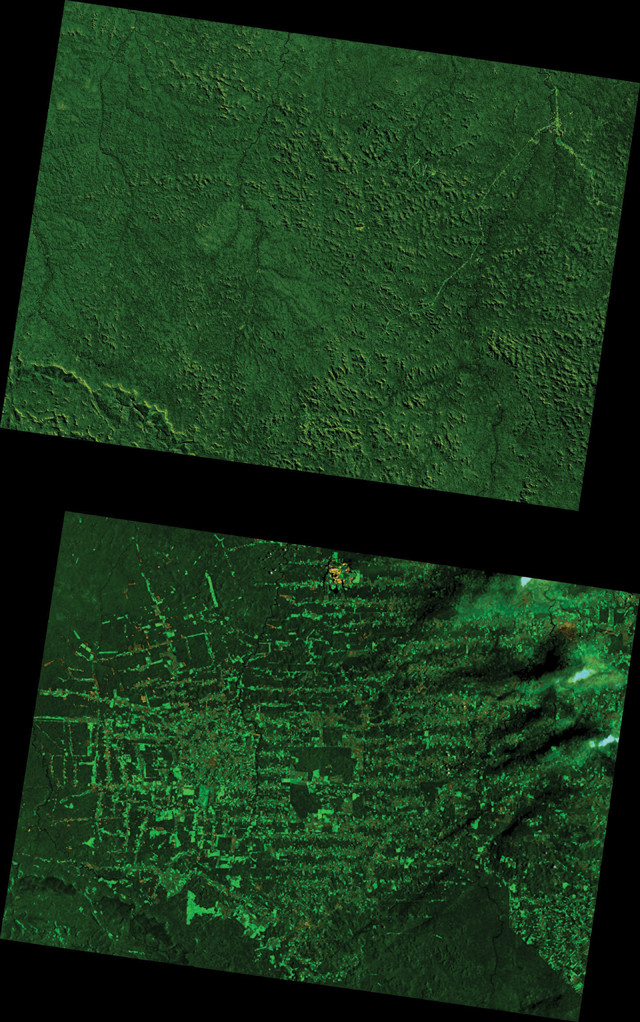
by Julia Rosen Tuesday, June 16, 2015

Between 1975 and 2001, the Rondônia region of Brazil lost 15,000 square kilometers of tropical rainforest. Credit: NASA/Goddard Space Flight Center.
Across the tropics, vast swaths of forest have been cleared to make room for crops and livestock. Beyond releasing vast stores of carbon trapped in soil and biomass, tropical deforestation has the potential to alter hydrological cycles in ways that could affect temperature and precipitation patterns around the planet, according to a new report in Nature Climate Change.
The report, by Deborah Lawrence and Karen Vandecar of the University of Virginia, synthesizes findings from more than 100 studies that investigated the link between deforestation and climate. Based on climate models as well as observations of historical changes, the authors concluded that complete tropical deforestation could produce up to 0.7 degrees Celsius of warming — equivalent to what Earth has experienced since 1850. It would also lead to strong changes in precipitation, both locally and at higher latitudes, although they found that total global rainfall would remain constant.
In more realistic scenarios involving only partial deforestation of the Amazon, Central Africa and Southeast Asia, the effects on climate were less severe. However, in the Amazon and Central Africa, models hinted at a threshold between 30 and 50 percent of forest loss; beyond this level, regional drying became severe enough to dramatically impact ecosystems. The pattern of forest clearing also seemed to matter. Studies included in the analysis by Lawrence and Vandecar suggest that small deforested patches actually experience local increases in rainfall, until they grow larger than 50,000 square kilometers, after which precipitation decreases below normal.
Lawrence and Vandecar wrote that changes induced by deforestation could undermine the agricultural industries that motivated people to remove trees in the first place. Potential threats include shifts in the amount and timing of precipitation and increasingly extreme temperatures.
© 2008-2021. All rights reserved. Any copying, redistribution or retransmission of any of the contents of this service without the expressed written permission of the American Geosciences Institute is expressly prohibited. Click here for all copyright requests.